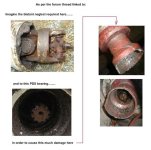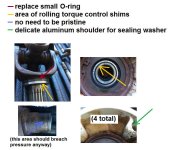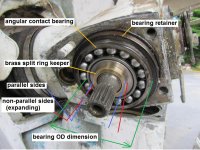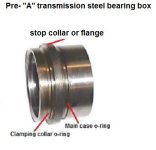Yeah there’s a grease zerk back there. I found all the parts I need locally with the exception of the shims and helmet pin, but I didn’t actively look for those. I figure I’ll be doing good to get the bearing and crosses done today. Still waiting on carb parts as you know. Also need to replace plywood cabin top and bed by railing stanchens. Lots of little other things too.Do you have a grease zert on top of the flywheel housing behind the engine where the PDS bearing is? Once you pull the PDS shaft you can inspect the forward seal and shaft. Mine had pits in the sealing surface and installed a speedi sleeve. Your almost ready to put it back together. The forward seal allows you to grease the PDS bearing without pulling it apart. The rear seal allows relief when yuo pump grease in the cavity in front of the bearing.
I’ll bet money that my shaft is pitted too, and will have to look into the speedi sleeve you mention.
















